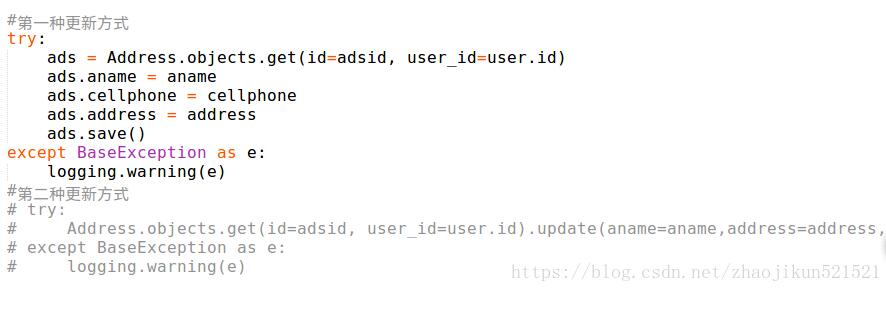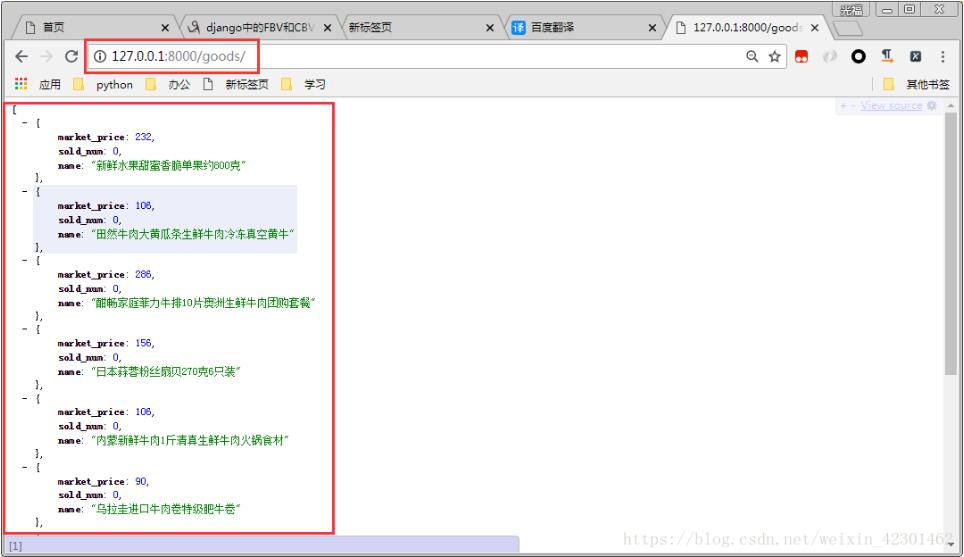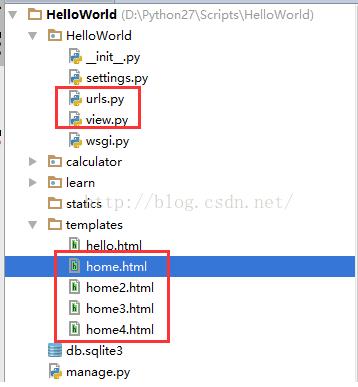django自定义非主键自增字段类型详解(auto increment field)
- 作者: 森么辣么萌
- 来源: 51数据库
- 2020-08-06
1.django自定义字段类型,实现非主键字段的自增
# -*- encoding: utf-8 -*-
from django.db.models.fields import Field, IntegerField
from django.core import checks, exceptions
from django.utils.translation import ugettext_lazy as _
class AutoIncreField(Field):
description = _("Integer")
empty_strings_allowed = False
default_error_messages = {
'invalid': _("'%(value)s' value must be an integer."),
}
def __init__(self, *args, **kwargs):
kwargs['blank'] = True
super(AutoIncreField, self).__init__(*args, **kwargs)
def check(self, **kwargs):
errors = super(AutoIncreField, self).check(**kwargs)
# 每张表只能设置一个字段为自增长字段,这个字段可以是主键,也可以不是主键,如果不是主键,则必须设置为一种“键(key)”
# (primary key)也是键(key)的一种,key还包括外键(foreign key)、唯一键(unique key)
errors.extend(self._check_key())
return errors
def _check_key(self):
if not self.unique:
return [
checks.Error(
'AutoIncreFields must set key(unique=True).',
obj=self,
id='fields.E100',
),
]
else:
return []
def deconstruct(self):
name, path, args, kwargs = super(AutoIncreField, self).deconstruct()
del kwargs['blank']
kwargs['unique'] = True
return name, path, args, kwargs
def get_internal_type(self):
return "AutoIncreField"
def to_python(self, value):
if value is None:
return value
try:
return int(value)
except (TypeError, ValueError):
raise exceptions.ValidationError(
self.error_messages['invalid'],
code='invalid',
params={'value': value},
)
def db_type(self, connection):
return 'bigint AUTO_INCREMENT'
def rel_db_type(self, connection):
return IntegerField().db_type(connection=connection)
def validate(self, value, model_instance):
pass
def get_db_prep_value(self, value, connection, prepared=False):
if not prepared:
value = self.get_prep_value(value)
value = connection.ops.validate_autopk_value(value)
return value
def get_prep_value(self, value):
value = super(AutoIncreField, self).get_prep_value(value)
if value is None:
return None
return int(value)
def contribute_to_class(self, cls, name, **kwargs):
assert not cls._meta.auto_field, "A model can't have more than one AutoIncreField."
super(AutoIncreField, self).contribute_to_class(cls, name, **kwargs)
cls._meta.auto_field = self
def formfield(self, **kwargs):
return None
2.使用
class Test(models.Model): id = models.UUIDField(primary_key=True, default=uuid4) numbering = AutoIncreField(_(u'numbering'), unique=True) name = models.CharField(_(u'name'), max_length=32, blank=True, null=True)
3.bug
当save()后并不能刷新instance,及save后numbering会为空值,需要重写get一次.
如果您修复了这个问题请留言回复下,谢谢
4.bug修复
以一种非常不优雅的方法进行了简单修复,重写了模型的save方法,在save后从新get
class AutoIncreFieldFixMinxin(object): def save(self, *args, **kwargs): super(AutoIncreFieldFixMinxin, self).save(*args, **kwargs) auto_field = self._meta.auto_field.name new_obj = self.__class__.objects.get(pk=self.pk) setattr(self, auto_field, int(getattr(new_obj, auto_field))) class Test(AutoIncreFieldFixMinxin, models.Model): id = models.UUIDField(primary_key=True, default=uuid4) sequence = AutoIncreField(_(u'sequence'), unique=True) name = models.CharField(_(u'name'), max_length=100)
补充知识:Django model 表与表的关系
一对多:models.ForeignKey(其他表)
多对多:models.ManyToManyField(其他表)
一对一:models.OneToOneField(其他表)
应用场景:
一对多:当一张表中创建一行数据时,有一个单选的下拉框(可以被重复选择)
例如:创建用户信息时候,需要选择一个用户类型【普通用户】【金牌用户】【铂金用户】等。
多对多:在某表中创建一行数据是,有一个可以多选的下拉框
例如:创建用户信息,需要为用户指定多个爱好
一对一:在某表中创建一行数据时,有一个单选的下拉框(下拉框中的内容被用过一次就消失了
例如:原有含10列数据的一张表保存相关信息,经过一段时间之后,10列无法满足需求,需要为原来的表再添加5列数据
ForeignKey(ForeignObject) # ForeignObject(RelatedField)
to, # 要进行关联的表名
to_field=None, # 要关联的表中的字段名称
on_delete=None, # 当删除关联表中的数据时,当前表与其关联的行的行为
- models.CASCADE,删除关联数据,与之关联也删除
- models.DO_NOTHING,删除关联数据,引发错误IntegrityError
- models.PROTECT,删除关联数据,引发错误ProtectedError
- models.SET_NULL,删除关联数据,与之关联的值设置为null(前提FK字段需要设置为可空)
- models.SET_DEFAULT,删除关联数据,与之关联的值设置为默认值(前提FK字段需要设置默认值)
- models.SET,删除关联数据,
a. 与之关联的值设置为指定值,设置:models.SET(值)
b. 与之关联的值设置为可执行对象的返回值,设置:models.SET(可执行对象)
def func():
return 10
class MyModel(models.Model):
user = models.ForeignKey(
to="User",
to_field="id"
on_delete=models.SET(func),)
related_name=None, # 反向操作时,使用的字段名,用于代替 【表名_set】 如: obj.表名_set.all()
related_query_name=None, # 反向操作时,使用的连接前缀,用于替换【表名】 如: models.UserGroup.objects.filter(表名__字段名=1).values('表名__字段名')
limit_choices_to=None, # 在Admin或ModelForm中显示关联数据时,提供的条件:
# 如:
- limit_choices_to={'nid__gt': 5}
- limit_choices_to=lambda : {'nid__gt': 5}
from django.db.models import Q
- limit_choices_to=Q(nid__gt=10)
- limit_choices_to=Q(nid=8) | Q(nid__gt=10)
- limit_choices_to=lambda : Q(Q(nid=8) | Q(nid__gt=10)) & Q(caption='root')
db_constraint=True # 是否在数据库中创建外键约束
parent_link=False # 在Admin中是否显示关联数据
OneToOneField(ForeignKey)
to, # 要进行关联的表名
to_field=None # 要关联的表中的字段名称
on_delete=None, # 当删除关联表中的数据时,当前表与其关联的行的行为
###### 对于一对一 ######
# 1. 一对一其实就是 一对多 + 唯一索引
# 2.当两个类之间有继承关系时,默认会创建一个一对一字段
# 如下会在A表中额外增加一个c_ptr_id列且唯一:
class C(models.Model):
nid = models.AutoField(primary_key=True)
part = models.CharField(max_length=12)
class A(C):
id = models.AutoField(primary_key=True)
code = models.CharField(max_length=1)
ManyToManyField(RelatedField)
to, # 要进行关联的表名
related_name=None, # 反向操作时,使用的字段名,用于代替 【表名_set】 如: obj.表名_set.all()
related_query_name=None, # 反向操作时,使用的连接前缀,用于替换【表名】 如: models.UserGroup.objects.filter(表名__字段名=1).values('表名__字段名')
limit_choices_to=None, # 在Admin或ModelForm中显示关联数据时,提供的条件:
# 如:
- limit_choices_to={'nid__gt': 5}
- limit_choices_to=lambda : {'nid__gt': 5}
from django.db.models import Q
- limit_choices_to=Q(nid__gt=10)
- limit_choices_to=Q(nid=8) | Q(nid__gt=10)
- limit_choices_to=lambda : Q(Q(nid=8) | Q(nid__gt=10)) & Q(caption='root')
symmetrical=None, # 仅用于多对多自关联时,symmetrical用于指定内部是否创建反向操作的字段
# 做如下操作时,不同的symmetrical会有不同的可选字段
models.BB.objects.filter(...)
# 可选字段有:code, id, m1
class BB(models.Model):
code = models.CharField(max_length=12)
m1 = models.ManyToManyField('self',symmetrical=True)
# 可选字段有: bb, code, id, m1
class BB(models.Model):
code = models.CharField(max_length=12)
m1 = models.ManyToManyField('self',symmetrical=False)
through=None, # 自定义第三张表时,使用字段用于指定关系表
through_fields=None, # 自定义第三张表时,使用字段用于指定关系表中那些字段做多对多关系表
from django.db import models
class Person(models.Model):
name = models.CharField(max_length=50)
class Group(models.Model):
name = models.CharField(max_length=128)
members = models.ManyToManyField(
Person,
through='Membership',
through_fields=('group', 'person'),
)
class Membership(models.Model):
group = models.ForeignKey(Group, on_delete=models.CASCADE)
person = models.ForeignKey(Person, on_delete=models.CASCADE)
inviter = models.ForeignKey(
Person,
on_delete=models.CASCADE,
related_name="membership_invites",
)
invite_reason = models.CharField(max_length=64)
db_constraint=True, # 是否在数据库中创建外键约束
db_table=None, # 默认创建第三张表时,数据库中表的名称
ForeignKey外键(跨表操作):
跨表操作1
v = models.Host.objects.filter(nid__gt=0)
v[0].b.caption #通过.进行跨表操作,在对象中去做跨表操作用.
跨表操作2
v = models.Host.objects.filter(nid__gt=0).values('nid','hostname','b_id','b__caption') #使用values()取值时可以用双下划线做跨表操作
for row in v:
print(row['nid'],row['hostname'],row['b_id'],row['b__caption'])
前端:
<td>{{ row.b__caption }}</td> # 用双下划线做跨表操作
以上这篇django自定义非主键自增字段类型详解(auto increment field)就是小编分享给大家的全部内容了,希望能给大家一个参考,






